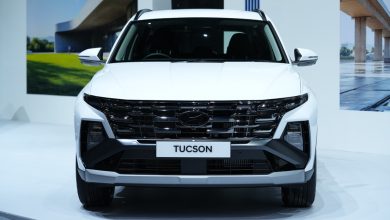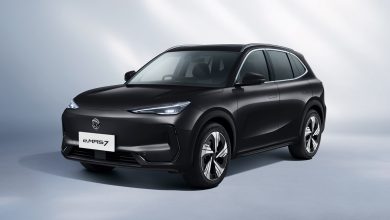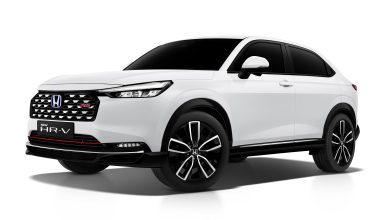The Hyundai TIGER Concept Is A Car That Can Walk
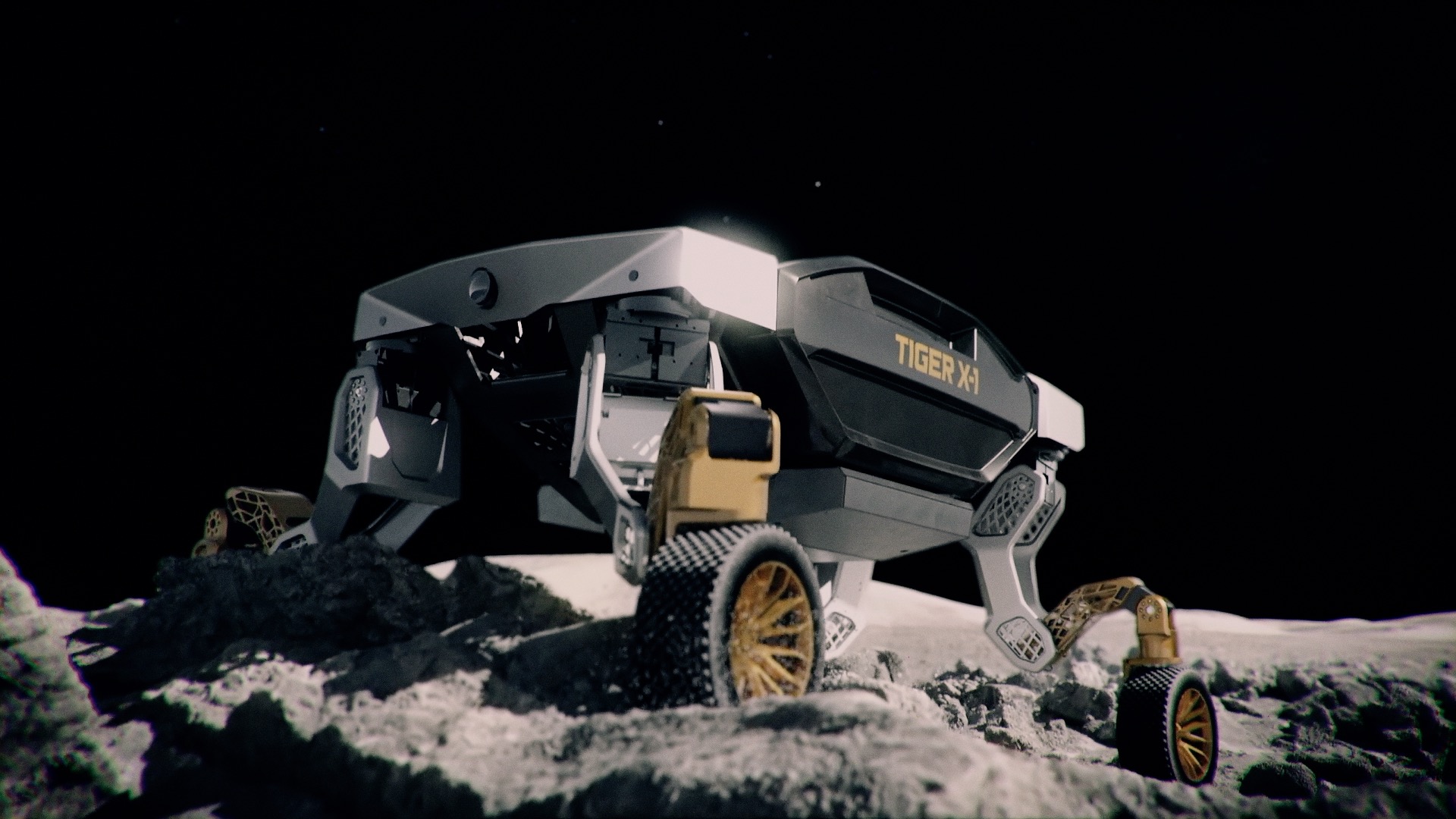
Hyundai goes wild with a crazy four-legged autonomous concept off-roader.
Now many might think that when it comes to crazy automotive ideas, Tesla would probably be the king of the hill. After all, it was this ambitious American EV upstart with its eccentric CEO that decided to put its yoke-style steering wheel into production, patent a laser to clean windscreens, not to mention coming up with the idea of attaching rockets to its cars.
Nevertheless, while it has to be said that Tesla is certainly a up there in the automotive crazy land, Hyundai though (yes, the same people who make sensible cars like the Tucson and Sonata) is perhaps the true ringleader of this madhouse. To justify this point, look no further than the South Korean automaker’s recent unveiling of its second four-legged Ultimate Mobility Vehicle (UMV) concept.

Named TIGER, which incidentally stands for Transforming Intelligent Ground Excursion Robot, this new UMV is actually a derivation of Hyundai’s Elevate concept that was shown off at CES back in 2019. The difference here though is that while the prior concept is designed to carry passengers, this new model here instead is the conceived to be fully autonomous.
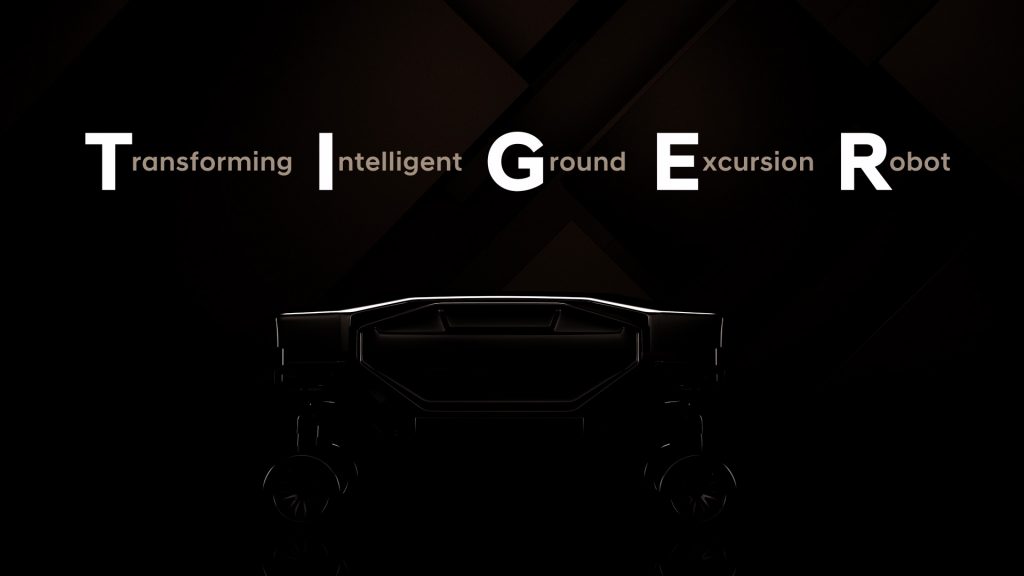
Starting first with perhaps the biggest question everyone has, and that is how this autonomous walking car works, under normal conditions the TIGER moves by rotating its four wheels, as this is indeed the most efficient mode of movement. When the going gets tough however, it then activates its walking ability to get unstuck, or even just solely rely on its movable legs to traverse through terrain that is too difficult or virtually impassable for wheels alone.
Moreover, thanks to 360-degree directional control of its motion, as well as a range of sensors for remote observation, and the plan to be able to fully charge and deploy these UMV through the means of unmanned aerial vehicles (UAV), the TIGER is therefore perfectly suited to traverse terrains and explore locales that is not humanly possible not just for cars but also well, humans.
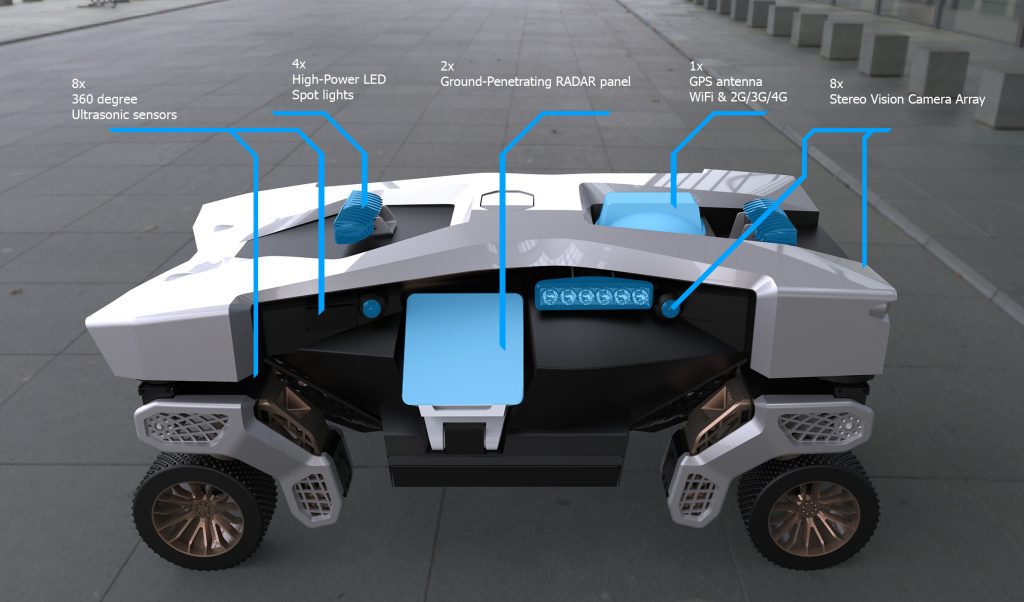
In fact, its primary design purpose of the TIGER was to serve as a mobile scientific exploration platform in extreme environments like natural disaster zones. Hyundai though is also of aiming for the stars too with this UMV concept, with the wish to deploy these UMVs on to the surface of the moon or other planets.

Just bringing it back to Earth for the time being and going back to the topic of disaster areas, thanks to its large load bay too, the TIGER could be put to use in another more humanitarian purpose aside from exploration by acting cargo carrier to inhospitable locations. An added bonus of this sophisticated leg and wheel locomotion system is that it also keeps the payload more level than a traditional off-roader.
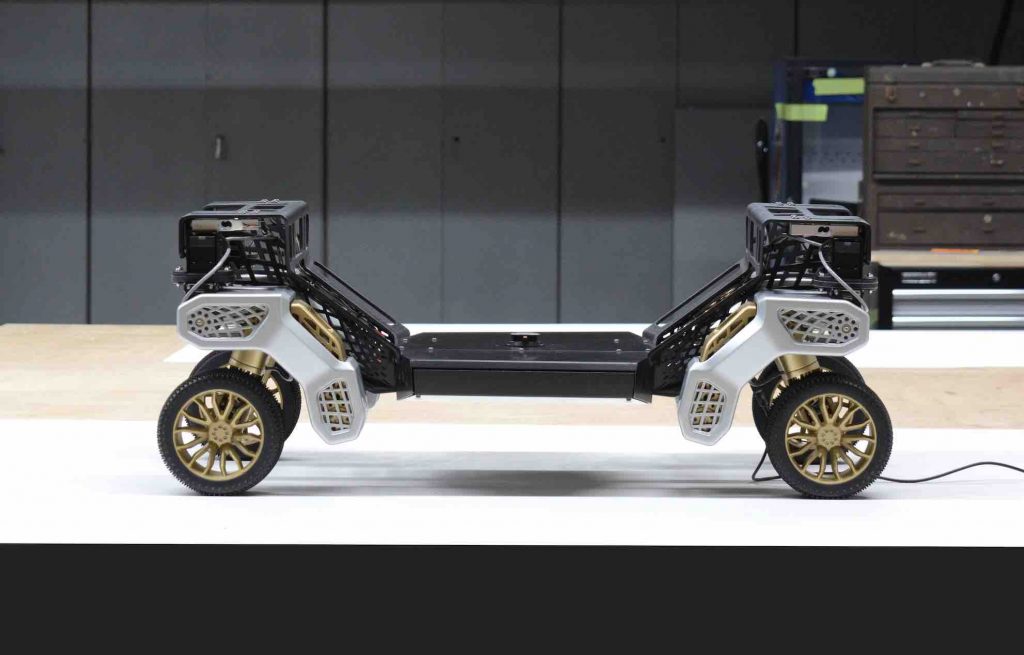
Developed by the Hyundai Motor Group’s newly launched New Horizon Studio in California, the TIGER was designed in partnership with Autodesk and Sundberg-Ferar. Using this UMV concept as a base, these partnership are also working on other innovations like the development of strong yet lightweight structures using additive manufacturing.
Speaking more about the TIGER specifically, it is sadly not expected to make it into production any time soon. Then again though, with Hyundai literally betting big on robotics as being a large part of future mobility solutions, it would be prudent not to rule out a form of the UMV roaming the most inhospitable parts of this world (or some other world) in the future.
PRESS RELEASE: Hyundai Motor Group has revealed TIGER (Transforming Intelligent Ground Excursion Robot), the company’s second Ultimate Mobility Vehicle (UMV) and the first designed to be uncrewed. The transforming intelligent ground excursion robot is designed to carry various types of payload while traveling over challenging terrain.
TIGER is being developed by Hyundai Motor Group’s New Horizons Studio, headquartered in Mountain View, California. The studio was established in late 2020 to develop UMVs drawing on research and innovation leadership from Silicon Valley and other innovation hubs.
“Vehicles like TIGER, and the technologies underpinning it, give us an opportunity to push our imaginations,” said Dr. John Suh, Head of New Horizons Studio. “We are constantly looking at ways to rethink vehicle design and development and re-define the future of transportation and mobility.”
Concept vehicle showcases capability across remote and inaccessible terrain
TIGER’s exceptional capabilities are designed to function as a mobile scientific exploration platform in extreme, remote locations. Based on a modular platform architecture, its features include a sophisticated leg and wheel locomotion system, 360-degree directional control, and a range of sensors for remote observation. It is also intended to connect to unmanned aerial vehicles (UAVs), which can fully charge and deliver TIGER to inaccessible locations.
A large load bay housed within its body means TIGER can carry goods for delivery, or be deployed to deliver aid packages in emergency situations. Leg-wheel articulation enables TIGER to tackle a range of extreme situations while keeping payloads more level than a typical ground vehicle.
With its legs retracted, TIGER drives like an all-wheel drive vehicle and is in its most efficient mode because it moves by rolling traction. But when the vehicle gets stuck or needs to travel over terrain that is difficult or impassable for wheels alone, it uses its walking ability to get unstuck or more easily travel over that terrain. This was a feature previously seen in Elevate, Hyundai Motor Group’s first-ever UMV concept with moveable legs, which debuted at the 2019 Consumer Electronic Show (CES).
Like Elevate, Hyundai’s other transforming four leg-wheel ground vehicle, TIGER shares similar characteristics such as its legs and wheels. The difference between Elevate and TIGER is that, while the former can carry passengers, the latter is uncrewed. Both TIGER and Elevate blend robotic and wheeled locomotion technologies, allowing them to traverse terrain beyond the limitations of even the most capable off-road vehicle.

First version designed in Silicon Valley with global development partnerships
The first version of TIGER is X-1 (the X stands for experimental) and brings together a wide-range of technological and design expertise. The project is being led by Hyundai Motor Group’s New Horizons Studio, while working in close partnership with Autodesk, a leading engineering design software company.
“Working closely with the team at Hyundai on the TIGER X-1 vehicle, using advanced technology such as generative design to push the boundaries of increasing strength while reducing weight in transportation, is exactly what we mean when we talk about creating the new possible,” said Srinath Jonnalagadda, Vice President of Business Strategy for Design and Manufacturing at Autodesk. “New design, engineering and manufacturing techniques enabled by Autodesk Fusion 360 help today’s modern, collaborative teams get to production faster and more efficiently.”
TIGER X-1 fuses Autodesk’s generative design capabilities with Hyundai’s growing R&D capabilities in mobility. The teams have been working together to create a lightweight but incredibly strong structure, with the legs and certain chassis elements created using carbon fiber composite additive printing.
Collaborating with external concept design experts Sundberg-Ferar, New Horizons Studio has been developing TIGER X-1 to deliver and retrieve critical payloads across rugged terrain. These capabilities make the concept vehicle ideal for 360-degree surface evaluation, in areas struck by natural disaster, while tackling challenging terrain, or even exploring the surface of another moon or planet.
“While developing TIGER with New Horizons Studio, the team at Sundberg-Ferar was looking to create a robot that maximized the efficiency of wheeled motion with the articulation of a quadruped to expand the possibility of reaching more remote locations,” said David Byron, Manager of Design and Innovation Strategy at Sundberg-Ferar. “TIGER is a modular platform design allowing different bodies to be attached to the chassis for unique applications such as cargo delivery or surveillance in locations not suitable for humans.”
New Horizons Studio – home to Hyundai Motor Group UMV development
New Horizons Studio, headquartered in Mountain View, California, develops vehicles with unprecedented mobility. Products from the studio target users with a need for travel and mobility across unconventional and off-road terrains, including places that cannot be reached by conventional wheeled vehicles. UMVs developed by New Horizons Studio can be subject to more challenging applications and environments, and adaptable to changing conditions.
New Horizons Studio has been focused on developing technologies to enable concept vehicles such as TIGER. These technologies include wheel-leg locomotion, high-performance materials and structures, high-performance power systems, chassis and body systems, virtual development and evaluation systems, and human-centered design and systems. Each of these represents significant technical progress that can be applied to any vehicle and will speed the development of advanced mobility solutions.
New Horizons Studio furthers Hyundai Motor Group’s vision to shape the future of mobility and brings onboard forward-thinking, innovative leadership from Silicon Valley and other innovation hubs. UMV concepts in development do not rely solely on wheels and are expected to address challenging driving situations – for example, a car with robotic legs could save lives as the first responder in natural disasters; or people without access to a curb ramp could hail a car to walk up to their front door, level itself and allow wheelchairs to roll in.
Using a combination of robotics and wheeled locomotion technology, Elevate, TIGER and other vehicles by New Horizons Studio are expected to redefine vehicular mobility.

